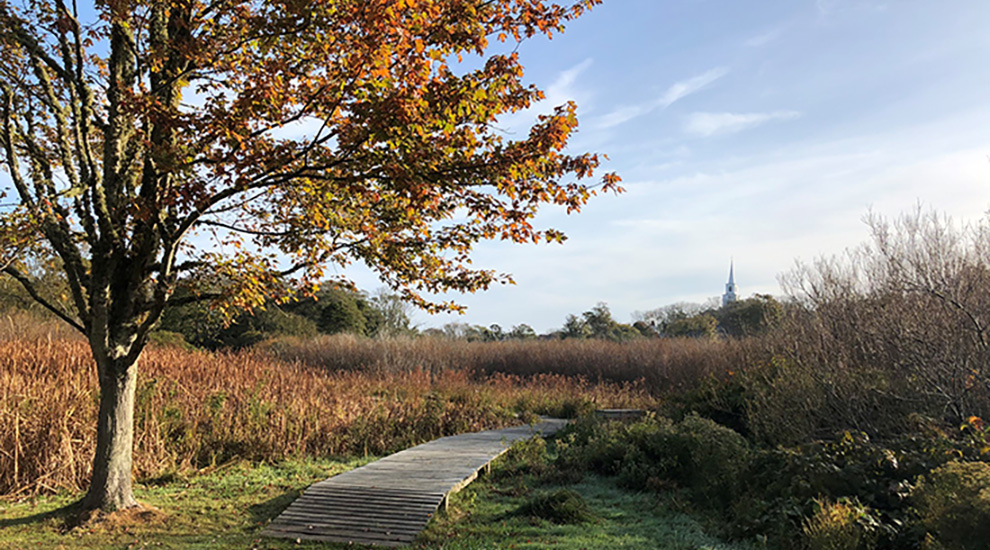
Current Conditions at Lily Pond
Lily Pond is one of the Land Bank’s first property purchases and remains one of our most popular parks today. Nestled in downtown Nantucket, this 6.5 acre park is located between Lily, North Liberty, and West Chester Streets. The majority of this parcel is a freshwater wetland that provides valuable habitat for numerous plants and animals. This low lying wetland also plays an important role in our local water cycle, collecting stormwater from surrounding roads, roofs, and other impervious surfaces. The wetland then filters out nutrients, solids, and bacteria before the water travels to the harbor.
However, this wetland is not functioning as well as it could be due to outdated stormwater infrastructure, sediment build up, lawn areas and paths which pool with water during storm events, and an abundance of invasive plant species. Read on to learn more about how we plan to restore the wetland at this site!
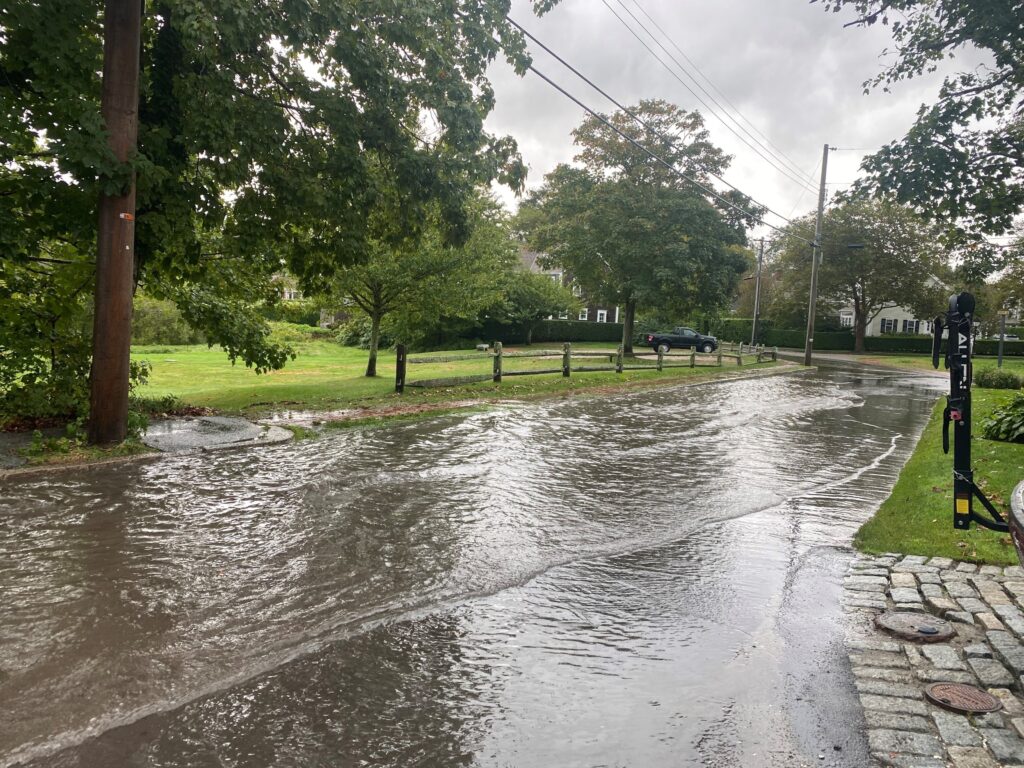
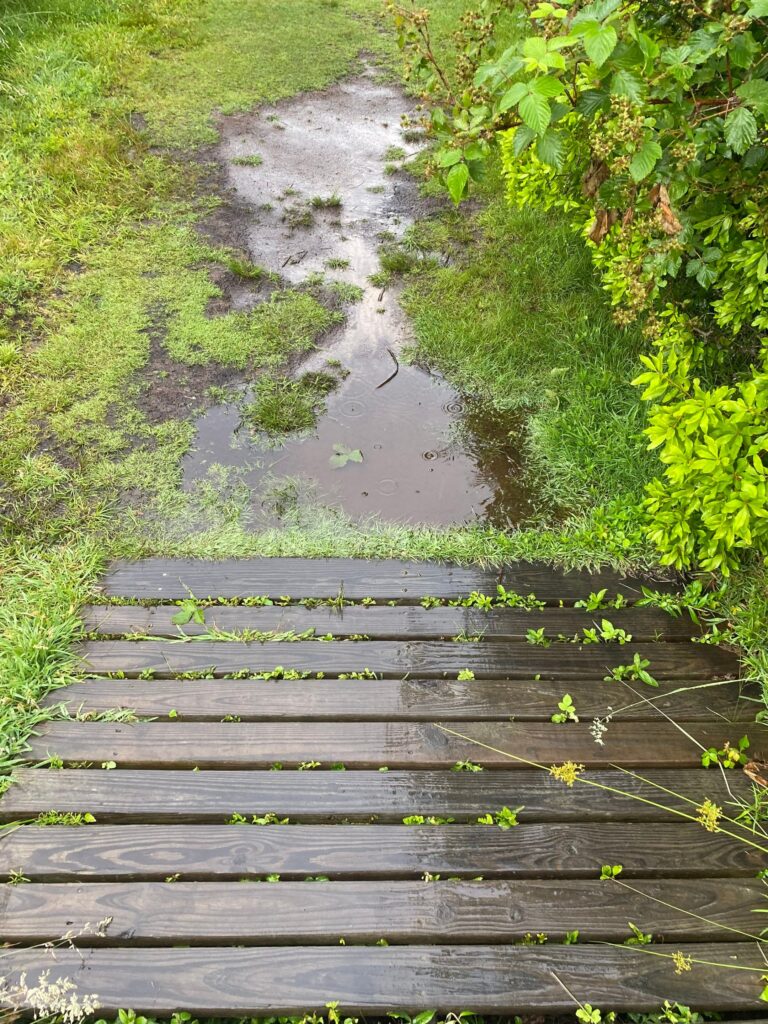
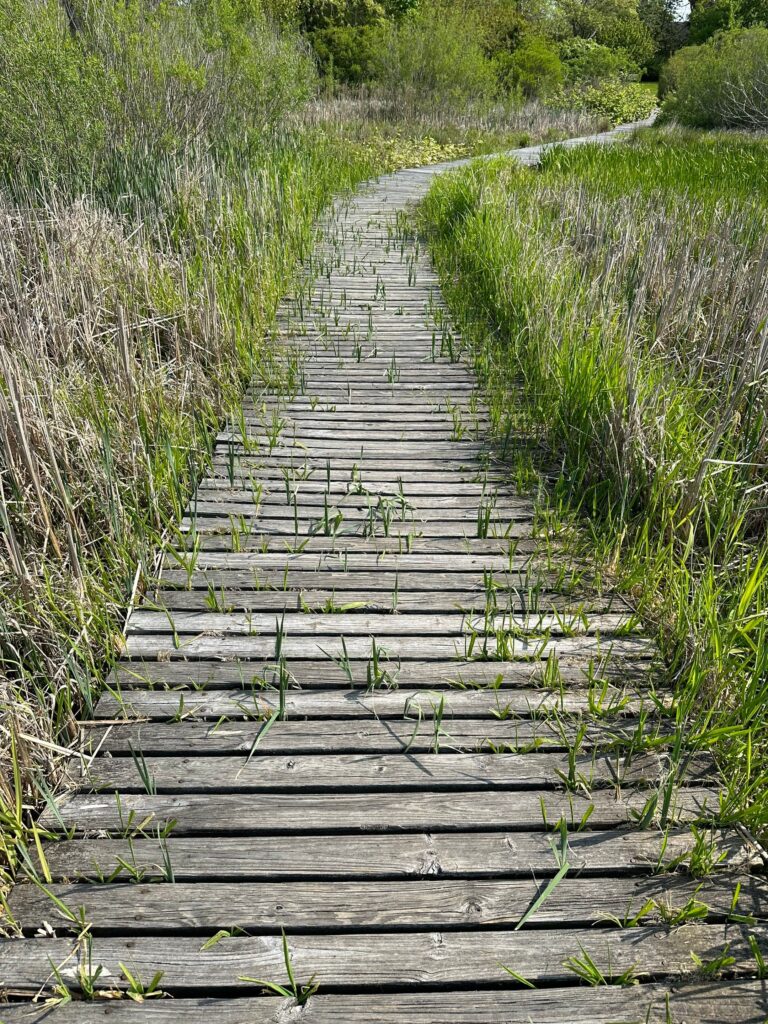
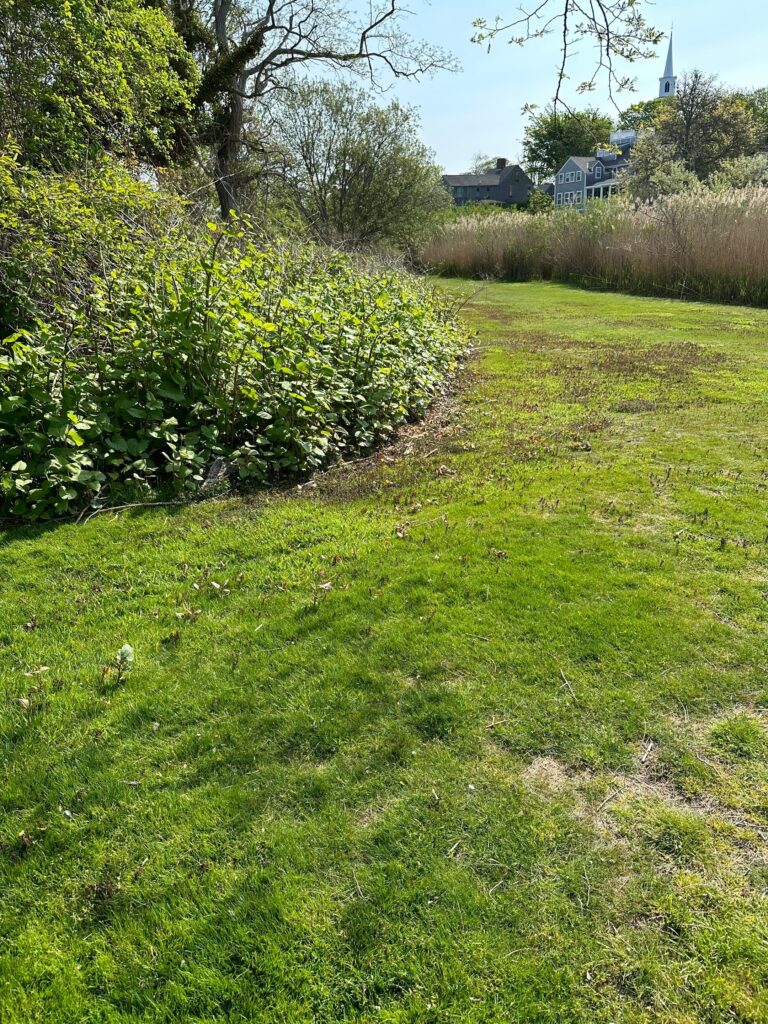
Lily Pond Project
The Lily Pond Project was developed by the Horsley Witten Group in collaboration with the Land Bank to improve the hydraulic, ecological and recreational function of Lily Pond Park. The four primary objectives of this plan are to:
- Improve the visitor experience within the park by enhancing entrances, expanding internal circulation, and providing educational signage.
- Improve the quality and manage the quantity of stormwater coming into, stored within, and flowing out of the park.
- Diversify habitats in the park through restoration and invasive species management.
- Address neighborhood concerns including flooding, invasive control, and public access.
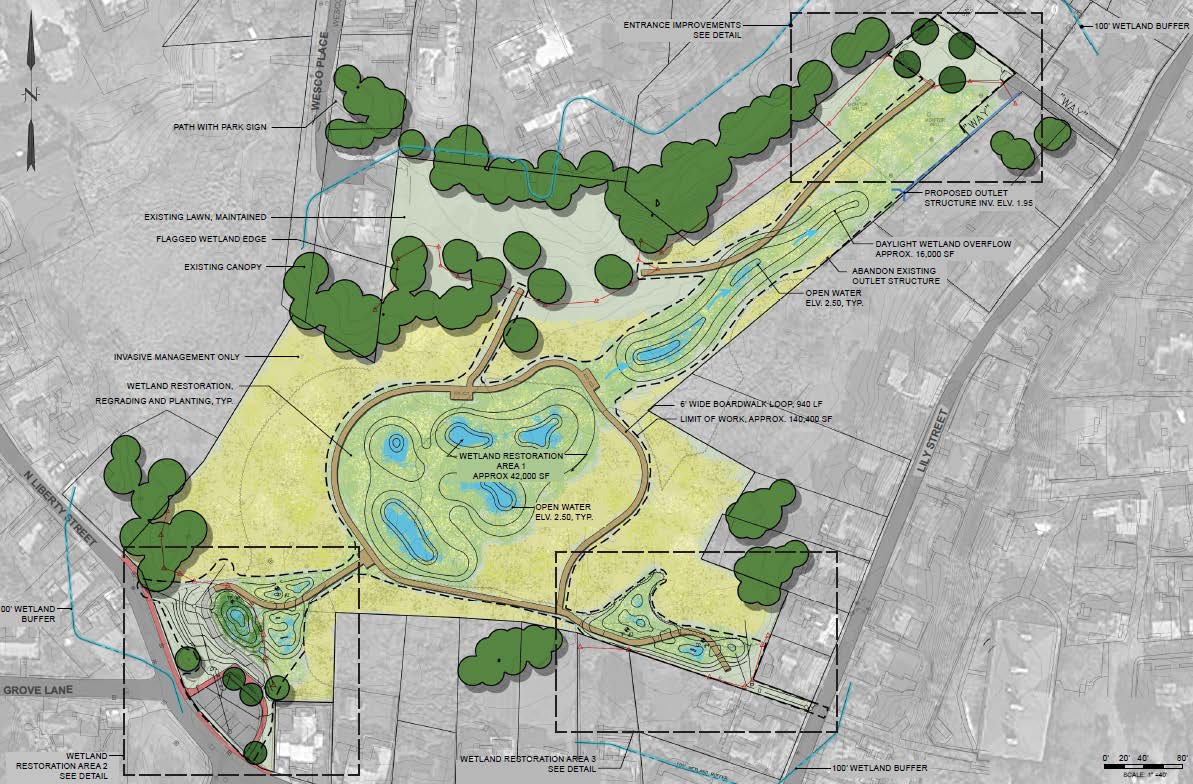
There are four potential phases for the Lily Pond project, as described below. Though this project is still in the planning process and its components are subject to change, we are excited to share what is possible for this restoration with the public! We welcome our community’s feedback on this design. Click here to send us an email with any questions, comments, or concerns.
The North Liberty Street Entrance has been selected as phase 1 of the project, because this area is one of the largest contributing drainages of the park. Therefore, it could have a major impact on water quality by intercepting stormwater runoff for treatment prior to discharge to the wetland, which eventually flows into our harbor. Read below for more information on each phase of the project.
North Liberty Street Entrance (Phase 1)
- Filtration systems to provide additional stormwater treatment, which is predicted to effectively improve the water quality in more than 1.4 million gallons of stormwater annually.
- Improved visitors’ entrance featuring ADA-accessibility into the park.
- Constructed wetlands planted with pollinator-friendly native plants.
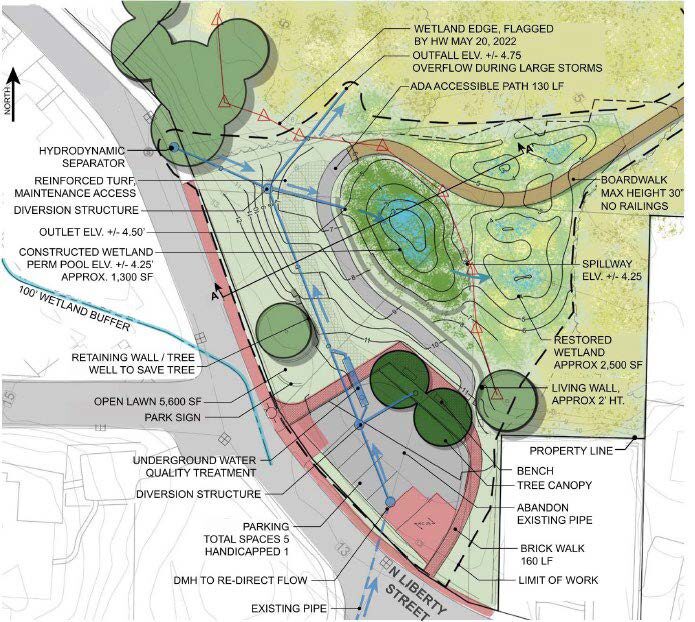
Central Wetland
- Habitat restoration to create a greater diversity in habitat available to native wildlife.
- Redesigned boardwalk to provide ADA access allowing everyone to experience the park.
Lily Street Entrance at Academy Hill
- Cascading bioswale (i.e., a strategically designed and vegetated area that can hold and absorb stormwater) to carry stormwater into the constructed wetland.
- Constructed wetland at the end of the cascading bioswale to provide additional stormwater treatment and storage capacity.
- Improved entrance featuring ADA-accessibility into the park.
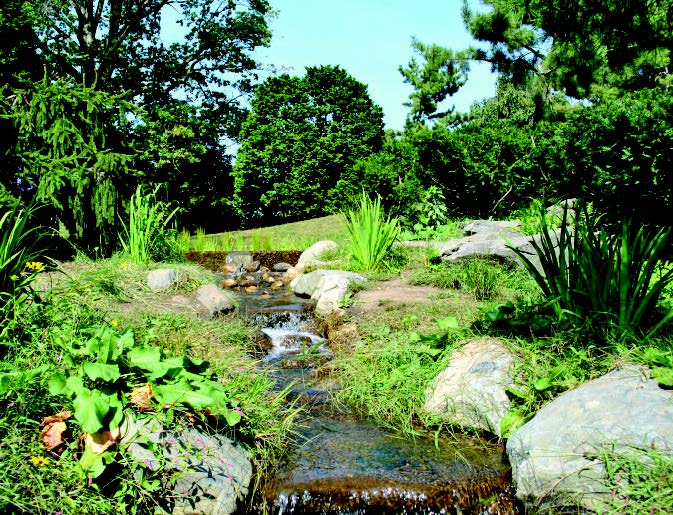
Lily Street Northeast Entrance
- Storm water pipe removal and stream restoration to re-establish a more naturalistic meandering channel with additional habitat.
- Improved entrance featuring ADA-accessibility into the park.
Contact us
Please fill out the contact form below to be added to the project distribution list or to share any project feedback, questions, or comments with the Land Bank.

